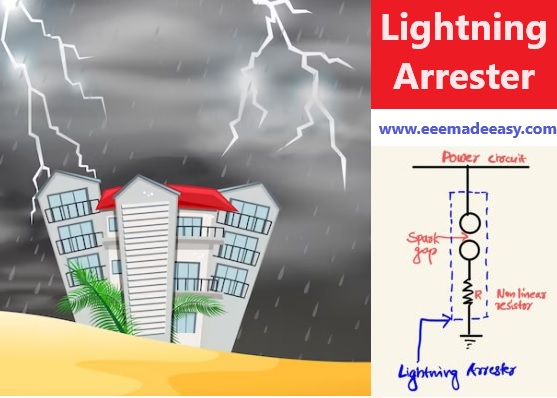Lightning arrester: A lightning arrester or a surge diverter is a protective device which conducts the high voltage surges on the power system to the ground.
lightning: An electric discharge between cloud and earth, between clouds or between the charge centres of the same cloud is known as lightning.
Lightning Arrester
There are several types of lightning arresters in general use.
They differ only in constructional details,but operate on the same principle viz. providing low resistance path for the surges to the ground.
Brass Copper Lightning Arrester
Different types of lightning arrester
the following are the types of lightning arresters :
- Rod gap arrester
- Horn gap arrester
- Multigap arrester
- Expulsion type lightning arrester
- Valve type lightning arrester
Read Also: Lightning Arrester Types|5 Types of Lightning Arresters
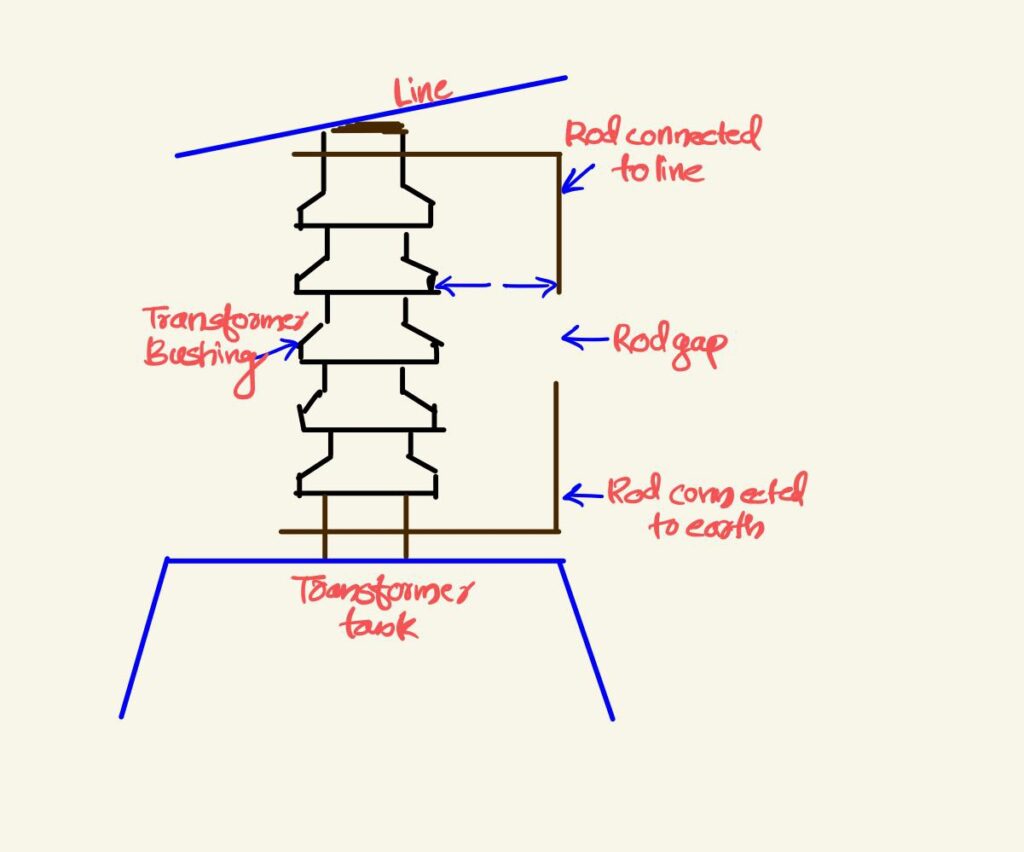
What is Lightning?
An electric discharge between cloud and earth, between clouds or between the charge centres of the same cloud is known as lightning.
Lightning is a huge spark and takes place when clouds are charged to such a high potential (+ve or −ve) with respect to earth or a neighbouring cloud that the dielectric strength of neighbouring medium (air) is destroyed.
Theory of Lightning
During the uprush of warm moist air from earth, the friction between the air and the tiny particles of water causes the building up of charges.
When drops of water are formed, the larger drops become positively charged and the smaller drops become negatively charged.
When the drops of water accumulate, they form clouds, and hence cloud may possess either
a positive or a negative charge, depending upon the charge of drops of water they contain.
The charge on a cloud may become so great that it may discharge to another cloud or to earth and we call this discharge as lightning.
The thunder which accompanies lightning is due to the fact that lightning suddenly heats up the air, thereby causing it to expand.
The surrounding air pushes the expanded air back and forth causing the wave motion of air which we recognise as thunder.
Types of Lightning Strokes
There are two main ways in which a lightning may strike the power system (e.g. overhead lines,
towers, sub-stations etc.), namely;
- Direct stroke 2. Indirect stroke
Direct stroke
In the direct stroke, the lightning discharge (i.e. current path) is directly from the cloud to the subject equipment e.g. an overhead line. From the line, the current path may be over the insulators down the pole to the ground.
The overvoltages set up due to the stroke may be large enough to flashover this path directly to the ground.
Indirect stroke
Indirect strokes result from the electrostatically induced charges on the conductors due to the presence of charged clouds.
Protection Against Lightning
Transients or surges on the power system may originate from switching and from other causes but the most important and dangerous surges are those caused by lightning.
The lightning surges may cause serious damage to the expensive equipment in the power system (e.g. generators, transformers etc.) either by direct strokes on the equipment or by strokes on the transmission lines that reach the equipment as travelling waves.
It is necessary to provide protection against both kinds of surges.
The most commonly used devices for protection against lightning surges are :
(i) Earthing screen
(ii) Overhead ground wires
(iii) Lightning arresters or surge diverters
Earthing screen provides protection to power stations and sub-stations against direct strokes
whereas overhead ground wires protect the transmission lines against direct lightning strokes.
lightning arresters or surge diverters protect the station apparatus against both direct strokes and the strokes that come into the apparatus as travelling waves.
Lightning Arresters
The earthing screen and ground wires can well protect the electrical system against direct lightning strokes but they fail to provide protection against travelling waves which may reach the terminal apparatus.
The lightning arresters or surge diverters provide protection against such surges.
A lightning arrester or a surge diverter is a protective device which conducts the high voltage
surges on the power system to the ground.
surge diverter
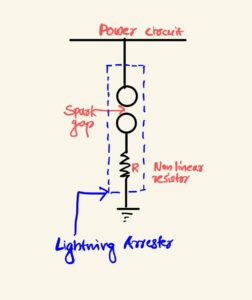
The above fig shows the basic form of a surge diverter. It consists of a spark gap in series with a non-linear resistor.
One end of the diverter is connected to the terminal of the equipment to be protected and the other end is effectively grounded.
The length of the gap is so set that normal line voltage is not enough to cause an arc across the gap but a dangerously high voltage will break down the air insulation and form an arc.
The property of the non-linear resistance is that its resistance decreases as the voltage (or current) increases and vice-versa.
This is clear from the *volt/amp characteristic of the resistor shown in Fig shown below
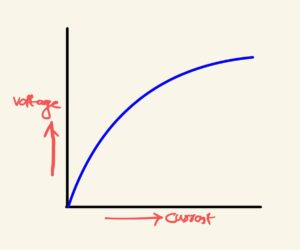
Working of Lightning Arrester or Surge diverter
The action of the lightning arrester or surge diverter is as under :
(i) Under normal operation, the lightning arrester is off the line i.e. it conducts **no current to
earth or the gap is non-conducting.
(ii) On the occurrence of overvoltage, the air insulation across the gap breaks down and an arc
is formed, providing a low resistance path for the surge to the ground.
In this way, the excess charge on the line due to the surge is harmlessly conducted through the arrester to the ground instead of being sent back over the line.
(iii) It is worthwhile to mention the function of non-linear resistor in the operation of arrester.
As the gap sparks over due to overvoltage, the arc would be a short-circuit on the power system and may cause power-follow current in the arrester.
Since the characteristic of the resistor is to offer high resistance to high voltage (or current), it prevents the effect of a short-circuit.
After the surge is over, the resistor offers high resistance to make the gap non-conducting.
Two things must be taken care of in the design of a lightning arrester.
- when the surge is over, the arc in gap should cease. If the arc does not go out, the current would continue to flow through the resistor and both resistor and gap may be destroyed.
2. I R drop (where I is the surge current) across the arrester when carrying surge current should not exceed the breakdown strength of the insulation of the equipment to be protected.
Read Also: Lightning Arrester Types|5 Types of Lightning Arresters
lightning arrester installation
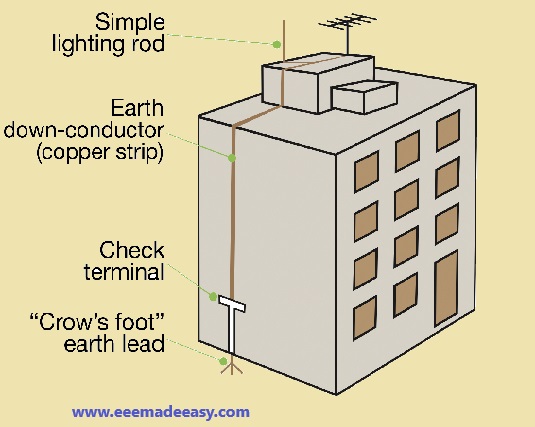
lightning arrester diagram
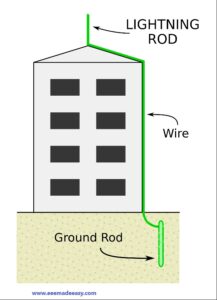
surge absorber
A surge absorber is a protective device which reduces the steepness of wave front of a surge by absorbing surge energy.
Read Also: Surge Absorber|3 Types of Surge Absorbers
ESE lightning arrester
ESE Lightning is an external lightning protection system with innovative technology. ESE stands for Early Streamer Emmision.
The ESE air terminal is also known as active lightning rod.
ESE Lightning arrester Installation
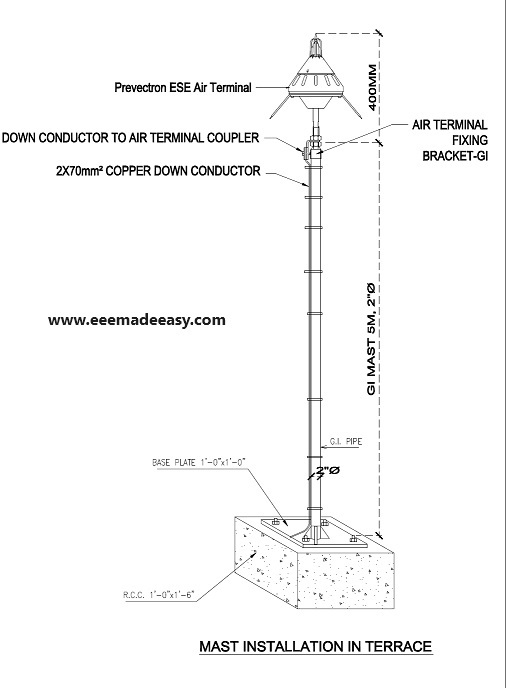
ese lightning arrester price in india
ese lightning arrester price ranges from 21,000 INR to 25,000 INR . check the price HERE

Lightning Arrester Symbol
lightning arrester symbols are given below.
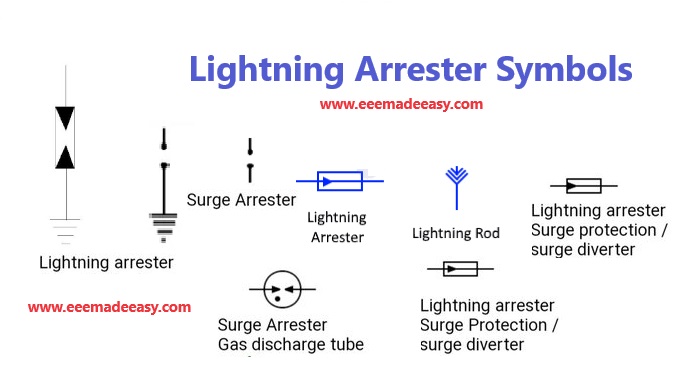
Lightning Arrester FAQ’s
What is called lightning arrester?
Lightning arrester is a protection device used to protect tall buildings, power systems, Electrical equipments etc from lightning strokes
What is lightning arrester used for?
A lightning arrester is used for protection from lightning strokes
What is the latest IEC 62305?
IEC 62305-4 part 4, Electrical and Electronic systems within structures
Which lightning arrester is used for 33kV?
lightning arrester used for 33kV is Expulsion type lighning arrester
What are the five types of lightning arrester?
the five types of lightning arresters are Rod gap arrester,Horn gap arrester,Multigap arrester,Expulsion type lightning arrester,Valve type lightning arrester
What is the lighting arrester voltage for 11kV system?
for 11kV system, the rated voltage of lightning arresters shall be 9 KV (rms)
Which lightning arrester is mostly used for HV?
Thyrite lightning arrester is mostly used for HV
What is the full form of ESE in lightning arrester?
ESE- Early Streamer Emmision
Is ese lightning arrester banned in india?
No, The effect of the judgment is that there is no specific ban on the manufacture, production, distribution, and usage of ESE technology in India
What is an ESE system?
Early Streamer Emmision (ESE) system is an external lightning protection system with innovative technology.
Read More on Lightning Arrester
- Lightning Arrester|ESE Lightning Arrester & Conventional Iightning Arrester
- Lightning Arrester Types|5 Types of Lightning Arresters
- Surge Absorber|3 Types of Surge Absorber
- Lightning Arrester Objective Questions|Surge Absorber MCQ Questions
Latest Posts
Latest Posts in EEE Made Easy
- Environment MCQ for RRB JE CBT 2|Objective Questions Environment for Competitive Exams
- RRB JE CBT 2 Computer Awareness Book Arihant|Objective Computer Awareness Book 2025
- RRB JE CBT 2 Exam Date 2025 Postponed|RRB JE CBT 2 Exam Date
- [PDF]RRB JE Result 03/2024 Cut off, Selected no of candidates for all regions
- [PDF]Final Answer Key Junior Instructor Mechanic Agricultural Machinery|643/2023 Solved Question paper
- Acoustics MCQs|Industries Extension officer|IEO 2025
- LASER MCQs| Industries Extension officer|IEO 2025
